1. A Cross-Stitch Sampler on the Wall
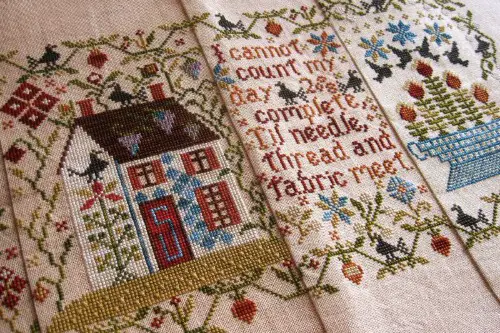
Right next to the family photos, you could usually find a framed cross-stitch sampler that said something like “Home Sweet Home” or featured a row of little houses and hearts. These pieces were made by hand, often by Grandma herself, and added a cozy, handmade touch to the home. They were decorative, yes—but also deeply personal. Every stitch was an act of patience and pride.
Cross-stitch has been around for centuries, but it hit a huge revival in the U.S. during the 1970s and ‘80s. Patterns were easy to follow, and craft stores stocked everything needed for a weekend project. For grandmas who grew up sewing and mending, cross-stitching was both familiar and creative. It was a way to say, “I made this home with love.”
2. Knickknack Shelves
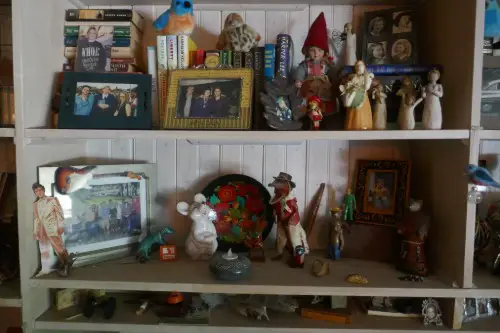
Miniature souvenir plates, tiny animal figurines, and maybe even a thimble or two—Grandma’s house had a whole display for these. Whether they were from family vacations or flea market finds, each item had a story. Dusting them was practically a religious ritual, but no one was allowed to touch. The collection wasn’t just stuff—it was a visual diary of life, love, and little moments.
Knickknack collecting surged in popularity in the 1950s and ‘60s, as mass production made small collectibles widely available. These items were often inexpensive, making them perfect for gifting and collecting on a budget. They also filled the emotional role of preserving memories in a tangible way. For grandmas, curating these shelves was an act of storytelling.
3. A China Cabinet (That No One Could Touch)

Every American grandma seemed to have a hutch or china cabinet proudly displaying fancy dishware. Whether it was actual china or just a set from the local department store, it was strictly off-limits to everyone under 30. It was the home’s museum exhibit, where special occasion plates and cups lived out their days untouched. Sometimes there were even figurines or glass animals tucked in for flair.
The tradition of china cabinets began in Europe but took hold in the U.S. in the early 20th century. For many grandmas, owning a matching set of “the good dishes” was a marker of class and pride. It was common for these items to be wedding gifts or family heirlooms, adding to their sentimental weight. Using them was a big deal—usually reserved for holidays or visits from the pastor.
4. Avon Collectibles
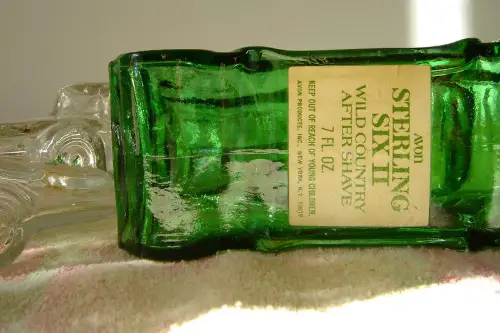
Chances are, your grandma had at least a few decorative perfume bottles shaped like animals, cars, or even busts of historical figures. These were Avon collectibles, and they were more than just trinkets—they were symbols of community, style, and a touch of old-school glam. Whether she sold Avon or just bought from the neighbor who did, Grandma was definitely on the mailing list. And yes, the fragrances were often overpowering, but somehow that was part of the charm.
Avon started selling door-to-door in the late 1800s, but their boom in collectible containers hit in the 1960s and ‘70s. They became hugely popular gifts and decorations, especially for women who didn’t have access to traditional retail spaces. Avon’s catalog allowed women to shop from home and feel a sense of control over their self-care. Plus, the kitschy bottles made great decor—even if they were never actually opened.
5. A Rotary Phone
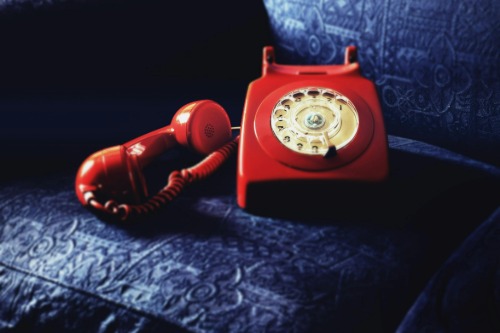
Before cell phones, before cordless phones—even before push-button landlines—there was the rotary phone. Sitting proudly on a hallway table or kitchen wall, it came with that satisfying dial sound and a hefty receiver. Making a call meant real commitment; there was no texting, no scrolling, just a direct line and your voice. And Grandma knew everyone’s number by heart.
The rotary dial was first introduced in the early 20th century, and remained common in homes until touch-tone phones started replacing them in the 1980s. They were sturdy, reliable, and often rented from the phone company, meaning they lasted forever. That’s why so many grandmas hung onto them long after newer models were available. It was a symbol of simpler times—and maybe a little resistance to change.
6. Doilies Everywhere
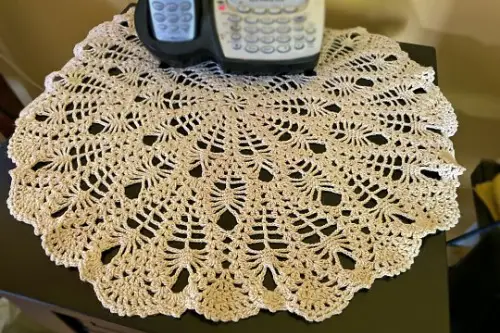
Tiny lace doilies tucked under every lamp, candy dish, and photo frame were just part of the aesthetic. Often handmade or passed down, they weren’t just decorative—they were protective, keeping surfaces clean and scratch-free. Sometimes crocheted, sometimes tatted, these intricate bits of thread were a way for Grandma to show off her domestic skills. And even if you didn’t understand them, you knew not to mess them up.
Doilies have been a domestic staple for centuries, but they had a major revival in mid-20th century American homes. Magazines like Better Homes & Gardens often featured patterns, and craft stores stocked kits for making them at home. They were especially popular among women who grew up during the Great Depression and WWII, when thrift and homemaking were essential. More than anything, they showed care—literally woven into the furniture.
7. A Candy Dish Filled with Werther’s Originals or Ribbon Candy

If you walked into Grandma’s house and didn’t see a glass candy dish, were you even at Grandma’s? Most of the time, it was filled with those golden-wrapped Werther’s Originals or impossibly sticky ribbon candy. These were more than just sweets—they were little offerings of love, doled out whether you wanted one or not. And that dish was always refilled, like it had some kind of magical candy portal.
The tradition dates back to at least the mid-20th century, when hard candies were a frugal treat that could be bought in bulk and last forever. Werther’s Originals were first sold in the U.S. in the 1980s, but they felt old-fashioned from the start. Ribbon candy, on the other hand, goes all the way back to the 1800s and was especially popular at Christmas. Either way, the dish wasn’t just about candy—it was about comfort.
8. Plastic Couch Covers

It’s almost a rite of passage to stick to your grandma’s couch on a hot summer day because of those infamous plastic covers. Designed to protect furniture from spills, stains, and the wear and tear of grandkids, these covers were clear, crinkly, and wildly uncomfortable. But they were effective, preserving pristine couches for decades. Somehow, the original upholstery beneath always looked brand new.
Plastic slipcovers peaked in popularity in the 1950s and ‘60s, when postwar consumerism made furniture a more expensive investment. Families were proud of their home furnishings, and grandmas especially wanted to make things last. Companies like Sure Fit and others made them easily available through mail-order catalogs. It was all about preservation—of furniture, of money, and maybe even of memories.
9. Tupperware in Harvest Gold or Avocado Green
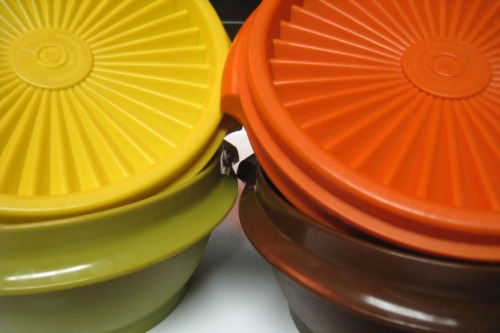
Open any kitchen cabinet and you’d find a cascade of plastic containers in retro hues—mainly harvest gold, burnt orange, and avocado green. This wasn’t just storage; it was a badge of culinary honor. Tupperware parties were social events, and getting a full matching set was a big deal. And no, you were never allowed to microwave them.
Tupperware took off in the 1950s thanks to a revolutionary business model: home parties hosted by women for other women. The colorful containers were durable, sealed tight, and came in stackable shapes perfect for leftovers and lunches. The ’70s brought those iconic earthy tones that became household staples. Grandma’s fridge was basically a shrine to early food preservation.
10. A Bible on the Coffee Table

Whether or not she was religious, Grandma probably had a large, leather-bound Bible sitting prominently in the living room. It might’ve had family names and dates scrawled inside, or pressed flowers tucked between its pages. This wasn’t just a religious item—it was often the family archive, a symbol of tradition and legacy. And yes, it was dusted regularly.
The family Bible has been a fixture in American homes for centuries, especially among Protestant families. In the 19th and early 20th centuries, Bibles were often given as wedding gifts and passed down through generations. They weren’t just read—they were cherished. For many grandmas, it was both a source of comfort and a link to their roots.
11. A Sewing Kit (Probably in a Cookie Tin)

Raise your hand if you’ve ever opened a blue Royal Dansk cookie tin only to find needles, spools, and buttons inside. This was peak grandma behavior, and it was surprisingly practical. Those tins were perfect for organizing, and once the cookies were gone (which didn’t take long), it just made sense. You didn’t waste containers—you reused them.
Sewing was second nature for women who came of age before fast fashion. Having a small mending kit meant clothes lasted longer, and Grandma was always ready to fix a hem or reattach a button. The cookie tin trick was a frugal hack passed down through generations. It was resourcefulness wrapped in nostalgia—and maybe a little disappointment if you were hoping for cookies.
12. Needlepoint Cushions or Chair Covers
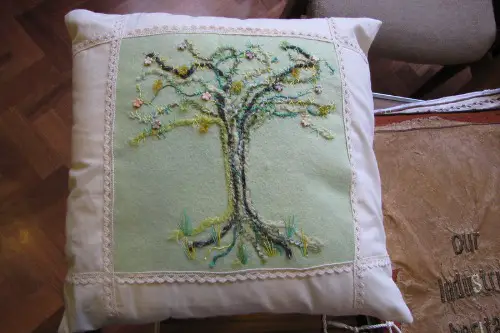
Some chairs in Grandma’s house weren’t just seats—they were soft canvases covered in needlepoint. These handcrafted pieces usually had floral patterns, birds, or quaint sayings stitched right into the fabric. They added color, comfort, and a sense of craftsmanship to even the plainest furniture. And you could always tell which one was Grandma’s favorite chair—it had the nicest cushion.
Needlepoint has been around for hundreds of years but had a big resurgence in mid-century America, especially among older women. Kits became widely available through catalogs and department stores in the 1960s and ’70s. It was a perfect hobby for quiet evenings, offering both relaxation and a productive outlet. Every cushion told a story, one stitch at a time.
13. A Fridge Magnet Collection
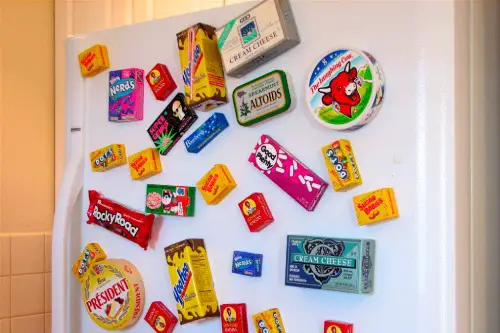
No American grandma’s kitchen was complete without a flock of colorful fridge magnets, often shaped like fruits, flowers, or little calendars from the local hardware store. Some held up kids’ artwork, others were souvenirs from places she’d been—or hoped to visit. They weren’t just decorative; they were little tokens of memory and love. And they were always just a little mismatched.
Fridge magnets started becoming popular in the 1970s when companies realized they could use them for advertising. Soon, they were everywhere—from mail promotions to gift shops. For grandmas, they served both form and function: they were useful, sentimental, and kind of addictive to collect. Plus, who didn’t love seeing their drawing held up by a smiling plastic strawberry?


